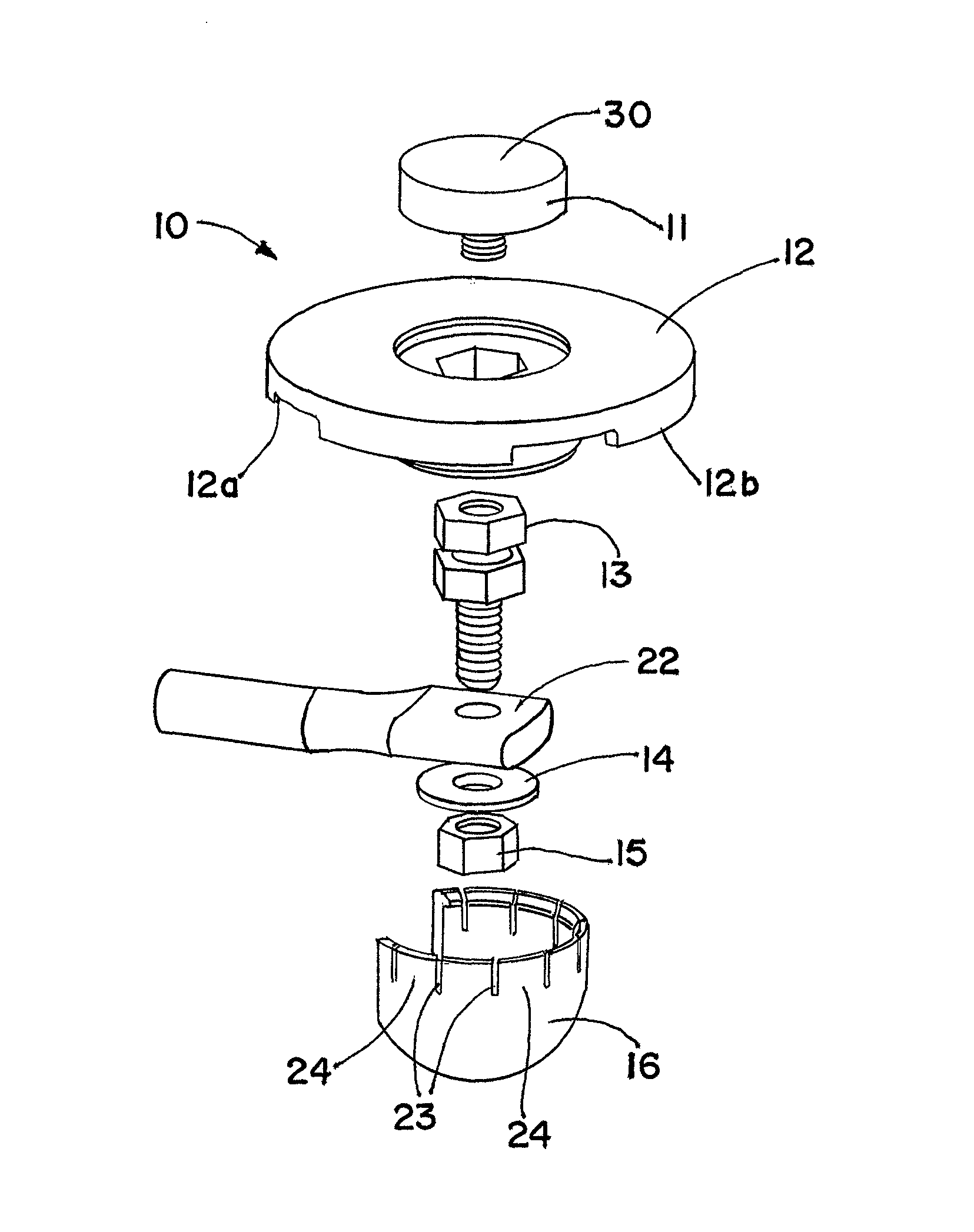Receptor for wind turbine blade lightning protection
a technology for wind turbine blades and receptors, which is applied in the direction of wind energy generation, liquid fuel engine components, and connection to earth, can solve the problems of damage or fatigue, current receptors typically do not insulate internal receptor components or connections, and current practices fail to adequately deter the initiation of upward leaders from conductive elements, etc., to achieve high dielectric strength and reduce the localized electrical field stress of conductive objects.
- Summary
- Abstract
- Description
- Claims
- Application Information
AI Technical Summary
Benefits of technology
Problems solved by technology
Method used
Image
Examples
Embodiment Construction
[0049]A receptor assembly for lightning protection of an object, such as a wind turbine blade, includes a receptor disk configured to be placed on a surface of the object, a receptor block insulator with an integral receptor block, a cover that engages the receptor block insulator, and a cap that engages the cover. The receptor disk and the receptor block may be made of electrically conductive materials, and the cover and the cap and the receptor block insulator may define a chamber among them that is lined with an electrically-conductive coating sandwiched between relatively high dielectric media to electrically isolate and shield internal parts of the receptor assembly from receiving a lightning strike directly.
[0050]The receptor system that is subsequently described is configured to minimize electrical field stress of the internally conductive connection components by addressing the relative geometries of conductive objects and altering the field apparent shape of these objects. ...
PUM
| Property | Measurement | Unit |
|---|---|---|
| perimeter | aaaaa | aaaaa |
| thickness | aaaaa | aaaaa |
| electrically conductive | aaaaa | aaaaa |
Abstract
Description
Claims
Application Information
 Login to View More
Login to View More - R&D
- Intellectual Property
- Life Sciences
- Materials
- Tech Scout
- Unparalleled Data Quality
- Higher Quality Content
- 60% Fewer Hallucinations
Browse by: Latest US Patents, China's latest patents, Technical Efficacy Thesaurus, Application Domain, Technology Topic, Popular Technical Reports.
© 2025 PatSnap. All rights reserved.Legal|Privacy policy|Modern Slavery Act Transparency Statement|Sitemap|About US| Contact US: help@patsnap.com



